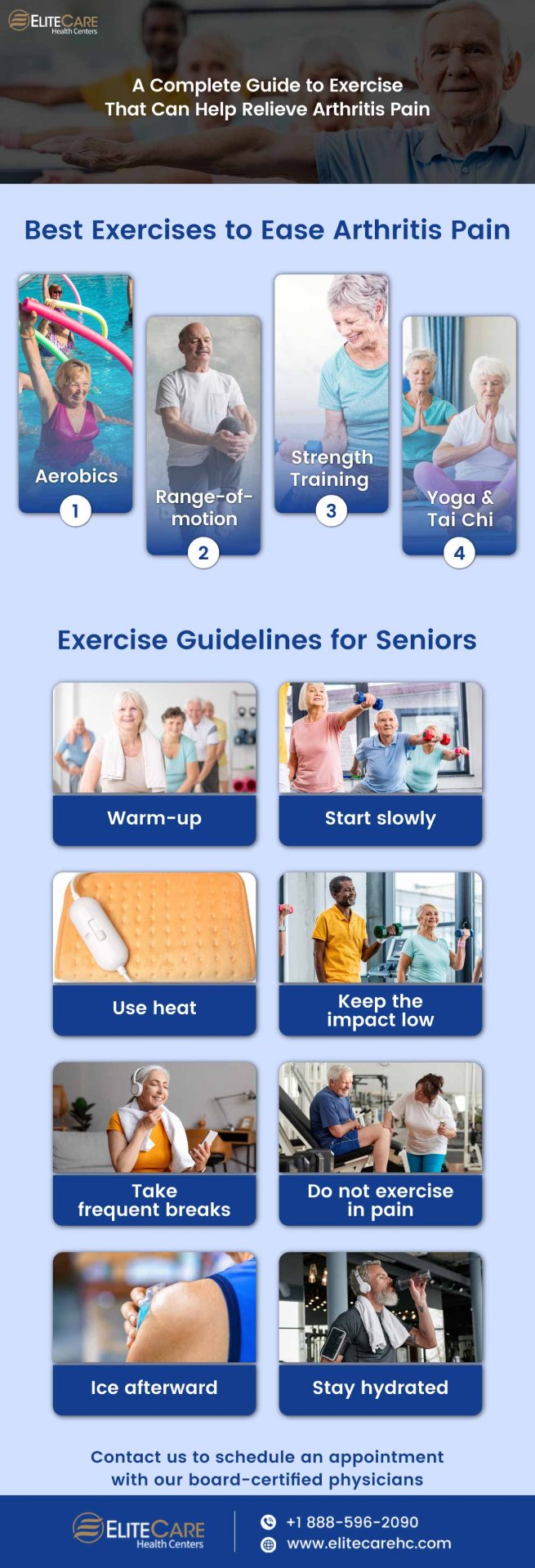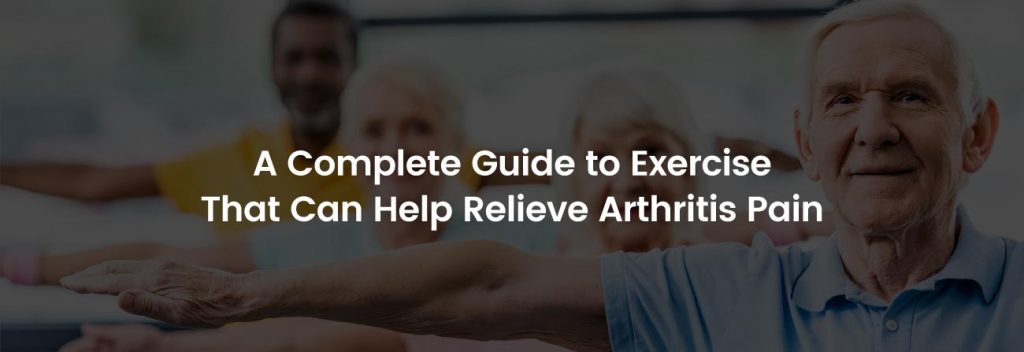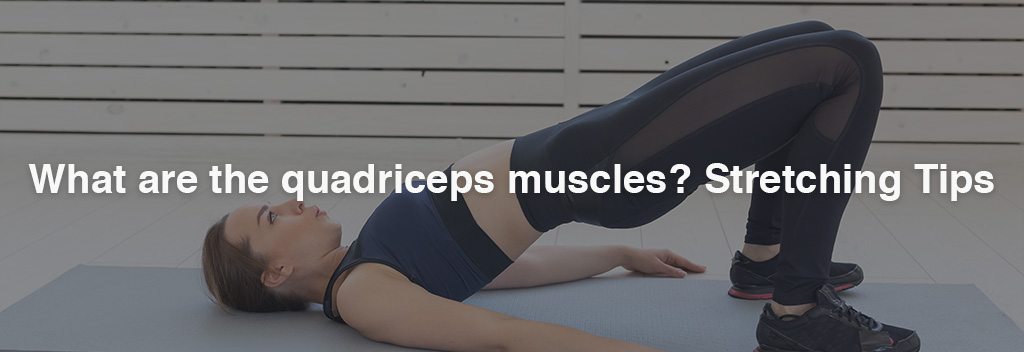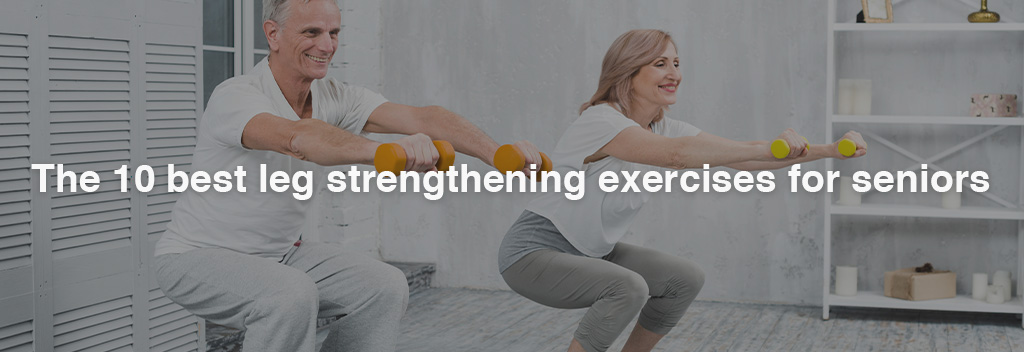
Arthritis is a common condition among seniors in the US, and it can cause significant pain and lead to disability. According to the Centers for Disease Control and Prevention (CDC), approximately 14 million adults aged 65 and older have doctor-diagnosed arthritis in the United States.
The severity of arthritis pain can vary for every individual. However, for seniors, arthritis is a more serious concern, making it difficult to perform daily activities such as getting dressed, cooking, and shopping. Therefore, seniors suffering from arthritis need to visit a primary care clinic and work with their healthcare provider closely to manage their condition and find ways to reduce pain and improve function.
Why Exercise is Important for Arthritis
Exercise helps release endorphins, a natural painkiller that can provide relief from Arthritis pain. In addition, it also improves the range of motion in the joints, which can become stiff due to arthritis. Exercise can help strengthen the muscles around the joints, providing support, and reducing the risk of injury. Besides, exercise also improves balance and coordination and helps maintain a healthy weight which can eventually reduce the strain on joints.
Best Exercises to Ease Arthritis Pain
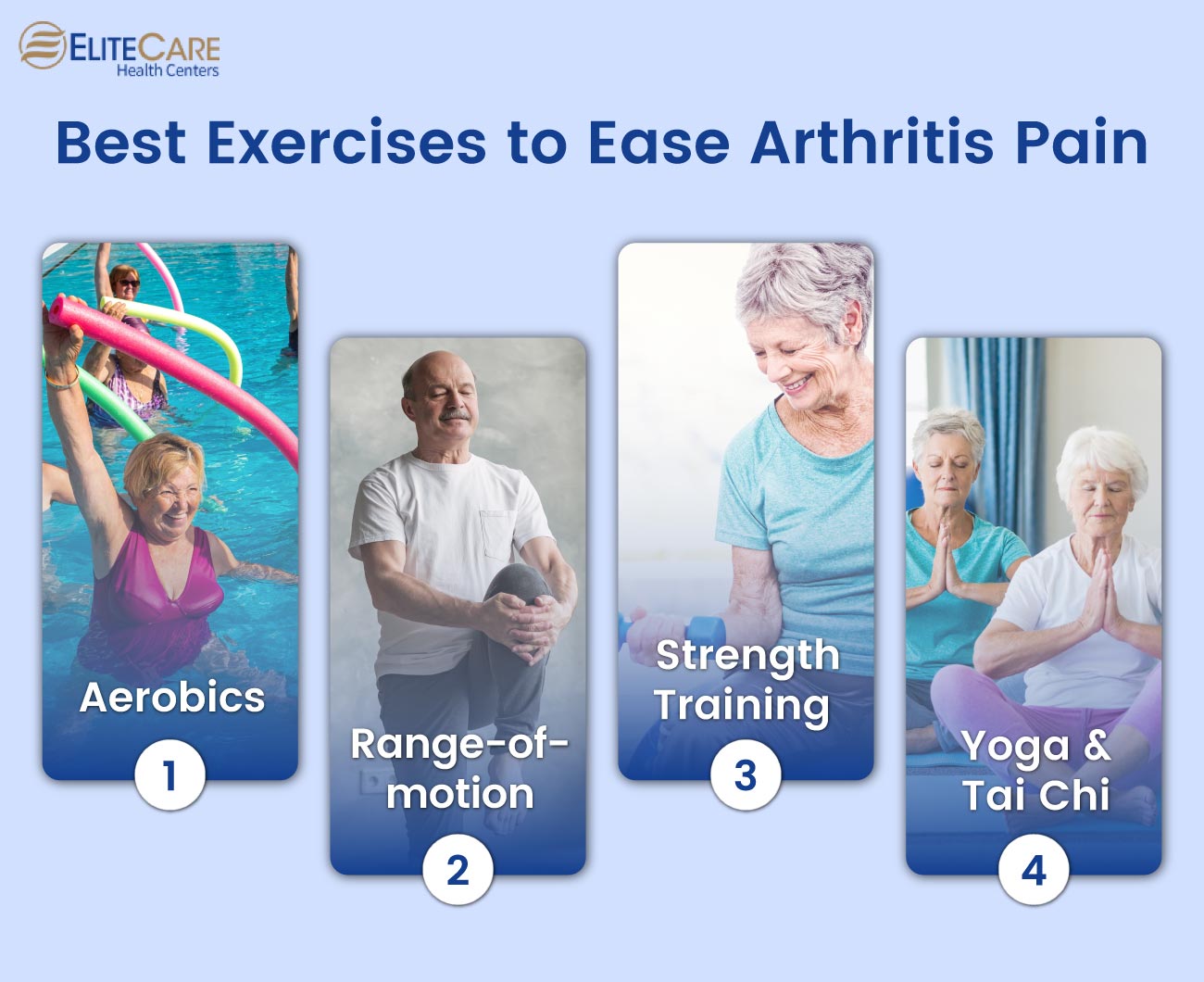
1. Aerobic exercises
Aerobic exercises, such as walking, swimming, and cycling, can help to improve cardiovascular fitness, reduce pain and stiffness, and increase overall function in seniors suffering from arthritis pain.
Start with low-impact exercises, such as walking, and gradually increase the intensity and duration of the activity as tolerated. Exercise for at least 150 minutes of moderate-intensity or 75 minutes of vigorous-intensity aerobic exercise each week, according to the Centers for Disease Control and Prevention (CDC).
2. Range-of-motion exercises
In arthritis, range-of-motion exercises can help maintain flexibility and joint mobility. These exercises can include gentle stretches, such as reaching for the sky and touching the toe.
Seniors can also try range-of-motion exercises for specific joints, such as shoulder circles or ankle rotations. These exercises should be performed carefully, slowly, and gently, without bouncing or pushing to the point of pain. Seniors can follow these specific instructions to ensure the safety and effectiveness of the exercises:
- Warm up with a light aerobic activity for five to ten minutes before beginning any range-of-motion exercises.
- Move the joints through the full range of motion, including both active and passive movements. Active movements involve using the muscles to move the joint, while passive movements involve moving the joint without using the muscles.
- Perform the exercises in a slow and controlled manner, using only a comfortable amount of force. Avoid bouncing or jerking and stop if there is any pain.
3. Strength training
Strength training exercises, such as resistance band exercises and weightlifting, can help to improve muscle strength and endurance. It provides support for the joints affected by arthritis.
Start with light weights and perform exercises in a slow, controlled manner, gradually increasing the weight and number of repetitions as tolerated. Following are a few strength training exercises suitable for seniors:
- Leg press: Sit on a leg press machine and press the weight away from the body using the legs. Make sure to keep the back and core engaged throughout the exercise.
- Chest press: Sit on a bench and lie down on the back. Press the weight away from the body using the chest muscles. Keep the core engaged and the back pressed against the bench throughout the exercise.
- Seated row: Sit on a seated row machine and pull the weight towards the body using the back muscles. Keep the core engaged and the shoulders back throughout the exercise.
4. Yoga & Tai Chi
Low-impact stretching exercises, such as yoga and Tai Chi, can help to improve flexibility and reduce pain and stiffness in seniors with arthritis. Tai Chi offers a range of gentle, flowing movements that can help reduce stiffness and tension.
When performing yoga, choose easy-to-practice poses that are suited for seniors. Try Child’s Pose, Cat-Cow Pose, and Downward-Facing Dog for starters.
These exercises should be performed slowly and gently, without bouncing or pushing to the point of pain. Yoga and Tai-chi can also help to improve balance and reduce the risk of falls.
In addition to these exercises, seniors can also try hand and wrist exercises, such as squeezing a ball or using a hand gripper, to target specific points of pain. Hip exercises, such as hip flexor stretches and hip strengthening exercises, and shoulder exercises, such as shoulder blade squeezes or arm raises are also useful to improve strength and mobility. Always consult a doctor or physical therapist before starting any exercise program to ensure that you are doing exercises that are safe and appropriate for your condition.
Exercise Guidelines for Seniors
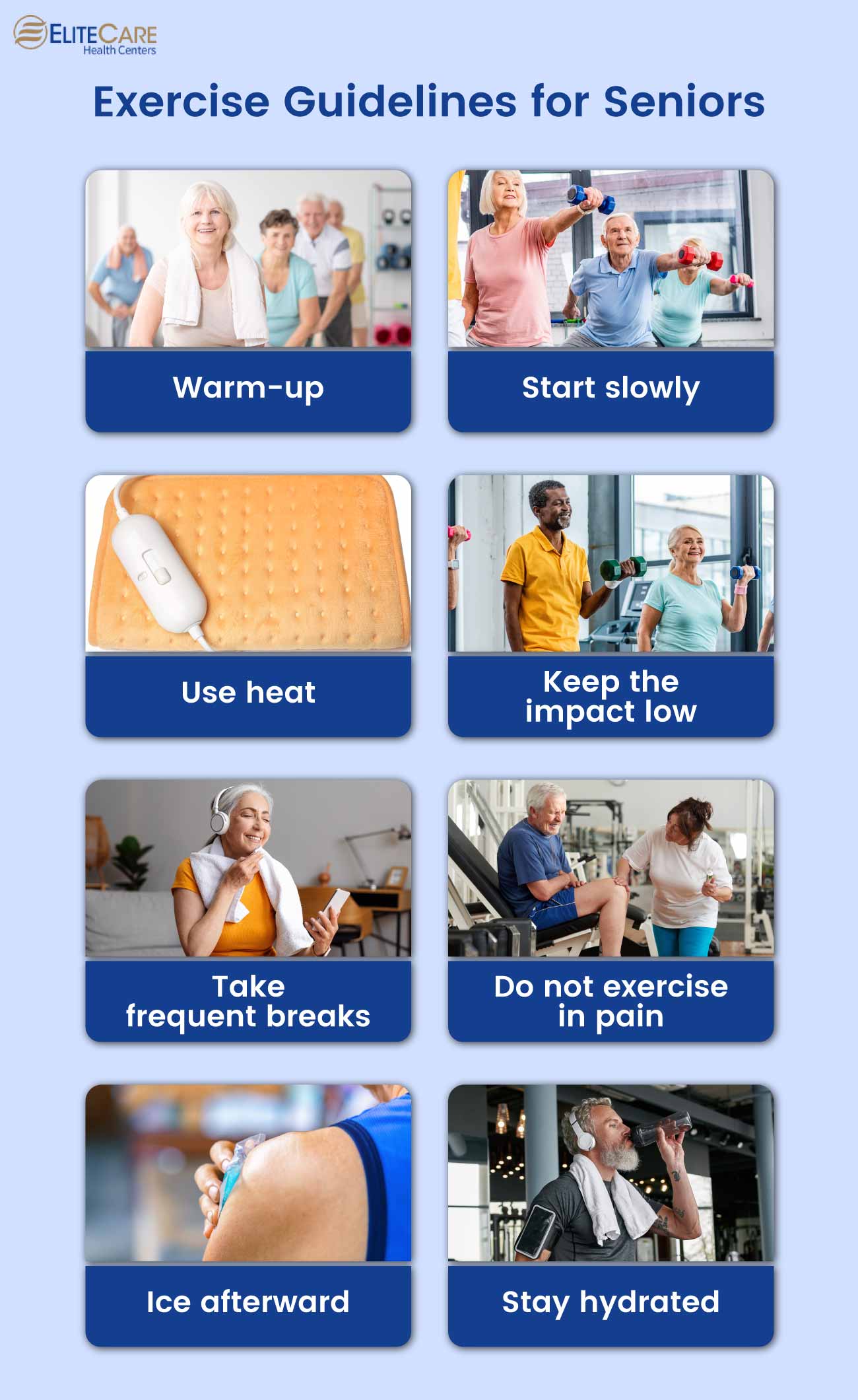
Seniors are often hesitant to begin an exercise routine due to fear of injury or an overwhelming sense of challenge. But with proper guidance, seniors can find a way to exercise safely and enjoyably. To make sure seniors get the most out of their exercise routine, here are some exercise guidelines for seniors with arthritis.
1. Remember to warm-up
Before beginning any workout, seniors should do light warm-up activities, such as slow walks or stretches, to prepare their bodies for more intense exercise. It will help reduce any stiffness in the joints while allowing them to feel comfortable before starting their workout.
2. Start slowly
When beginning an exercise routine, start slowly and increase the level of activity gradually. It will not only reduce the risk of injury but also allow them to get used to the different motions of the workout.
3. Keep the impact low
Seniors should not dive straight into high-impact activities such as running or practicing squats or planks, as these can put a lot of strain on their joints. Instead, they should focus on low-impact exercises at the beginning such as water aerobics or swimming, which can help reduce pressure on the joints.
4. Take frequent breaks
Frequent breaks allow seniors to rest their joints while also helping them take a few deep breaths and relax before continuing their workout.
5. Do not exercise in pain
If seniors experience any pain when exercising, they should stop and rest for a few moments. If the pain persists, they should consult their doctor to ensure that the pain is not caused by an underlying medical condition.
6. Use heat
To help reduce stiffness and pain, seniors can use heat before starting their workout. Seniors can use a hot water bottle, a heating pad, or a warm bath.
7. Ice afterward
After their workout, seniors should apply a cold compress to their joints to reduce any swelling or inflammation.
8. Stay hydrated
Drinking adequate water can help to keep their bodies cool, while also ensuring that their muscles are receiving all the nutrients they need. Generally, it is recommended that seniors drink 10 to 12 cups (2.4 to 2.9 liters) of fluid per day, with an additional 1 to 2 cups (240 to 475 milliliters) for every 30 minutes of exercise.
Conclusion
Regular exercise can be an effective way to help alleviate the discomfort associated with arthritis and can even help slow the progression of the disease. For seniors and caregivers, understanding the different types of exercise and its various benefits is essential to ensuring a healthy and pain-free life. With the right guidance and commitment, seniors and caregivers can reap the long-term rewards of an exercise regimen tailored to their needs and abilities. Contact EliteCare Health Centers, one of the finest medical clinics in Florida, and consult a doctor before starting a new exercise regime to avoid any additional health complications.
